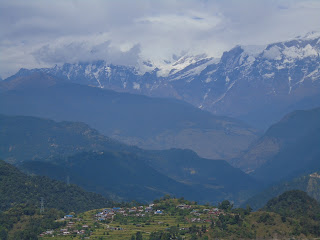It’s January, so of course I’ve gone walkabout.
I don’t usually whinge about a journey. And I’ll not go on about it this time. After all I can’t blame anyone for the snow in New York that meant planes were in the wrong place, nor the fog in London, both of which combined to make me miss a connection and spend nine hours, overnight, in Doha airport. I was shown a ‘recliner’ - but in fact it was a mis-named bench, just 60cm wide. I had hoped my sleeping on benches days were behind me.
But I made it to Kathmandu, just as night was falling and the temperature dropping. It’s winter here - compared with the freeze in the UK this is balmy, but for the Nepali it is definitely cold. So I was welcomed, as I have been before, to join the hotel staff round their fire.
A beer by the fire and some fried rice was enough to compensate for the journey.
And so into the mayhem of Thamel. I got lost, of course, but that’s half the fun of Thamel. Somehow I found the garden that had enchanted me last time I was here. Constructed from the rubble of the earthquake, this is a quiet haven in the middle of the pandemonium of the street. The rumble of motorbikes and stink of diesel is muffled here. There was a passing whiff of curry; but not, this this time, the scent of frangipani - those blossoms wait for kinder weather.
Close by, is the museum of Nepali art. Creativity is stifled when people are too poor to think beyond the next bowl of rice. The existence of this small museum is testament to the determination of the Nepali to made space for art. Its artifacts range from ancient images to modern surreal paintings: incongruous but demonstrative of changes here. Outside is an extended time line, showing Nepali history alongside western developments. If I were techier (as in more ‘techy’) I’d know how to put these three photos together, and to make them lighter; in any case you may need to enlarge them to get the idea.
I love the way Nepal surprises me every time I come. But some things, of course, stay the same. Including the wonderful Boudnath:
I wonder what the Buddha would have made of Nescafé?





































